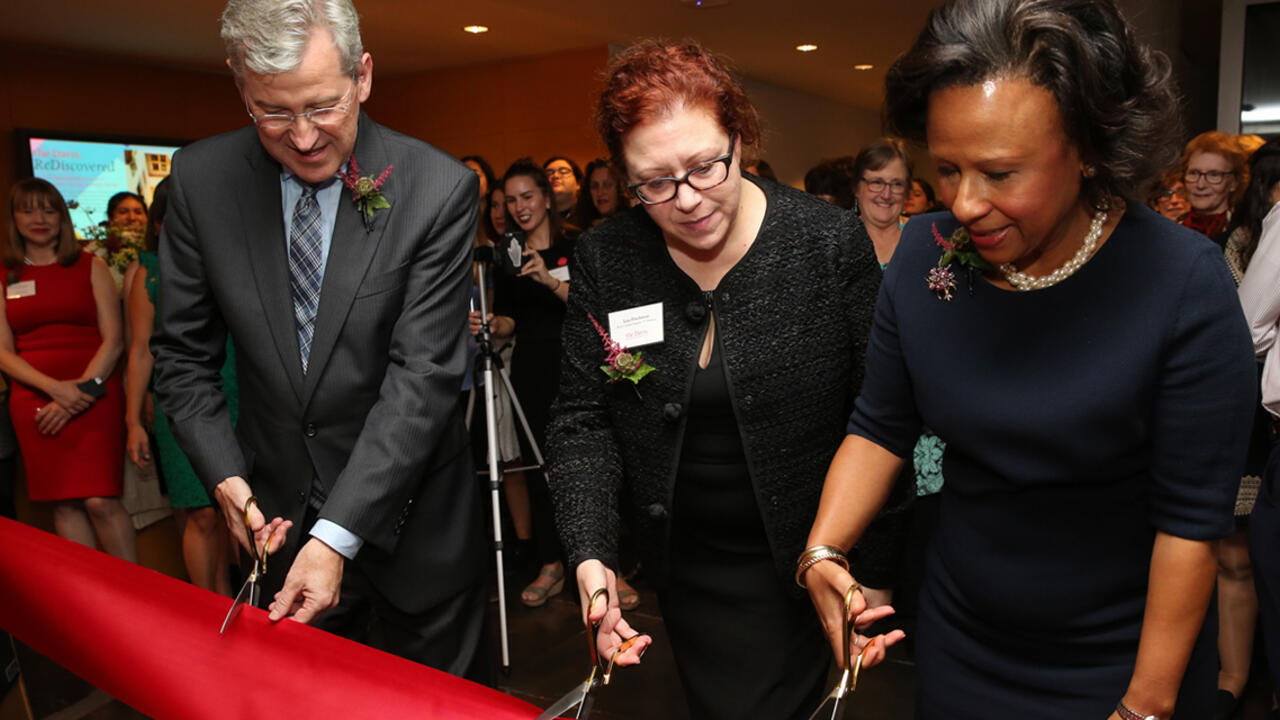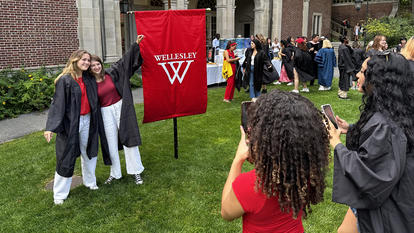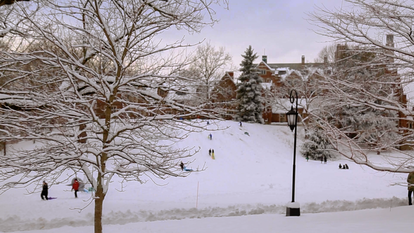the Davis. ReDiscovered

On September 28, the Davis Museum at Wellesley College unveiled the Davis. ReDiscovered, a total transformation of the Davis permanent collections galleries, reshaped and reconceived to present the breadth and strength of the Museum’s encyclopedic holdings. The reinstallation project brings renewed attention to geographic and chronological specificity and context, while more than doubling the number of works on view.
“Over three years in the making, the reinstallation demonstrates the pedagogical innovation, the bold approach to curatorial practice, and the aesthetic flair that distinguish today’s Davis,” said Lisa Fischman, Ruth Gordon Shapiro ’37 Director of the Davis. “We want to reintroduce our community to the hidden gems in our collections, honor Wellesley’s legacy of teaching through firsthand encounters with art across cultures, and celebrate the power of giving that has built these extraordinary collections and the building that houses them.”
Comprising three floors and 11 galleries, the Museum has more than doubled the number of works of art on view, from approximately 300 to more than 620. In total, its holdings have grown to include nearly 13,000 objects, with areas of strength in painting, sculpture, works on paper, photography, and decorative objects, from antiquity to the present day.
The community, local patrons, and guests viewed the redesigned galleries at an opening celebration on September 28. Among the many students in attendance were those from the Davis Museum Student Advisory Council (DMSAC), who “bridge the gap between the museum and the college community,” said DMSAC Coordinator Caroline Dickensheets ’17. She pointed out student involvement in the Davis beyond DMSAC, as well: “The table exhibits were curated by the Davis summer interns, which is a really unique opportunity. There are [also] a lot of employment opportunities here, with the tours or as a guard.”
Faculty, too, remain closely involved with the Davis, reflecting, as Fischman said, “the legacy of Wellesley’s pioneering approach to teaching art history… [and] a longstanding commitment to the value of learning.” Many lent their expertise in specific areas of study during the three-year research, restoration, and reinstallation process.
The Davis has been very active in collections growth over recent years, so in addition to highlighting well-known favorites, the new galleries will present recent purchases and gifts for the first time. Refurbished and repurposed interstitial spaces at the core of the Davis building’s staircase also create new opportunities for unexpected encounters; three landings feature portraits of women whose “female gaze” encompasses the galleries in their purview. Other spaces present rotating selections from the Davis’s exceptional photography collection.
The galleries are structured to highlight the Museum’s finest objects from across the globe, spanning more than four millennia of civilization, from recently conserved Mycenaean vessels to acquisitions of art created in the 21st century. The reinstallation is the most ambitious project of its kind since the Davis Museum building, designed by renowned Spanish architect Rafael Moneo, opened in 1993.
The lower level will continue to host temporary exhibitions, which this fall will include Partners in Design: Alfred H. Barr Jr. and Philip Johnson; Charlotte Brooks at LOOK, 1951–1971; and Anni Albers: Connections.
The Wellesley community and the general public are invited to experience the Davis. ReDiscovered and the special exhibitions during museum hours, Tuesday through Sunday, 11:00 AM–5:00 PM. Admission is free.
the Davis. ReDiscovered is generously supported by individual gifts from Mildred Cooper Glimcher ’61 and Arnold B. Glimcher, Amy Batchelor ’88, Kathleen B. Bissinger ’57, and Carol Grossman ’66; and by the Mellon Endowment for Academic Programs at the Davis Museum, The Mildred Cooper Glimcher ’61 Endowed Fund for the Curatorship of Contemporary Art, the Kemper Curator of Academic Programs at the Davis Museum Fund, Wellesley College Friends of Art at the Davis, the Helyn MacLean Endowed Program Fund for Contemporary and South Asian Art, the Alice S. Acheson Fund, the Wellesley College Museum Program Fund NEA Challenge, the James Wilson Rayen Gift, and in part by the Institute of Museum and Library Services.


